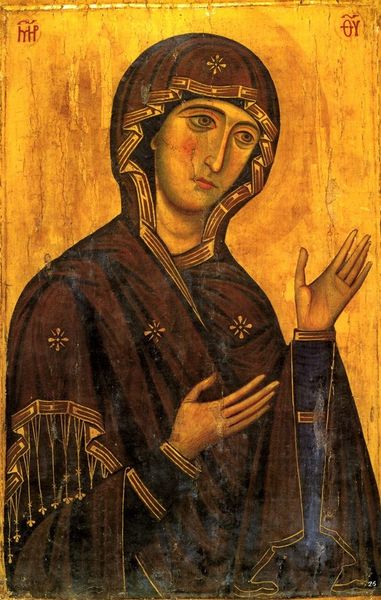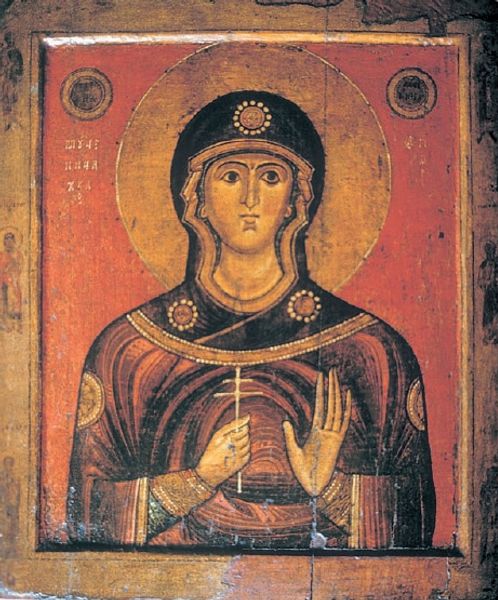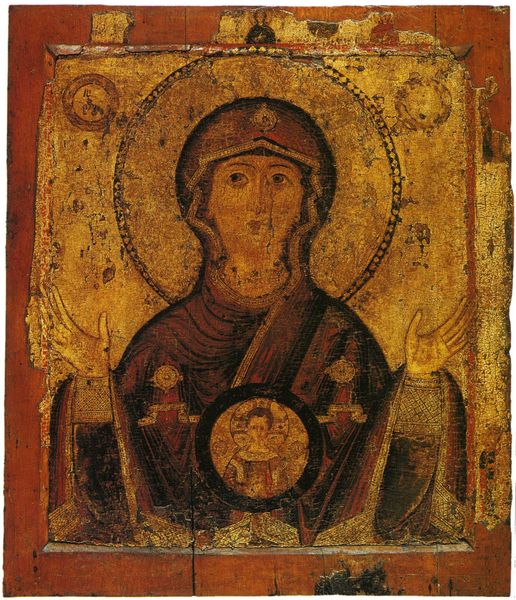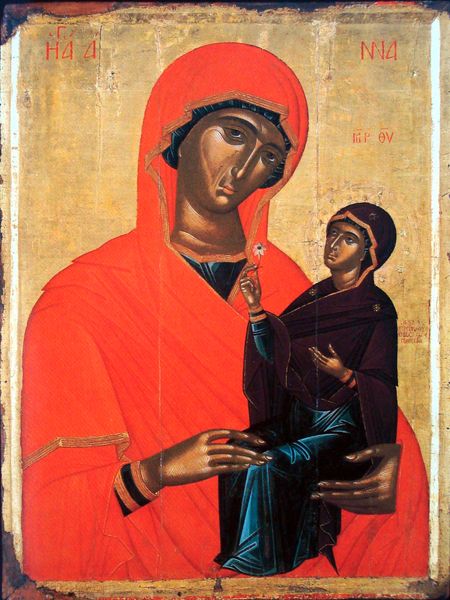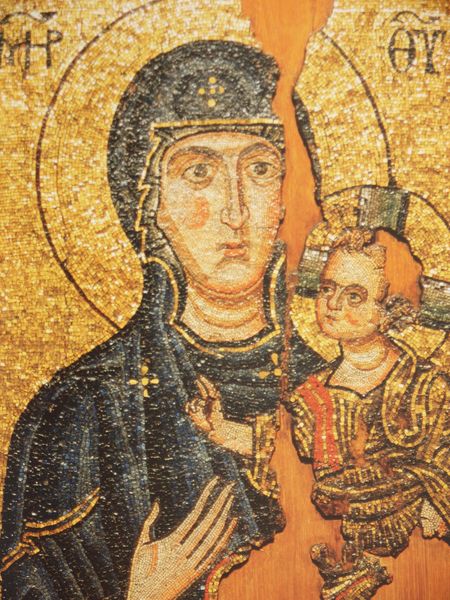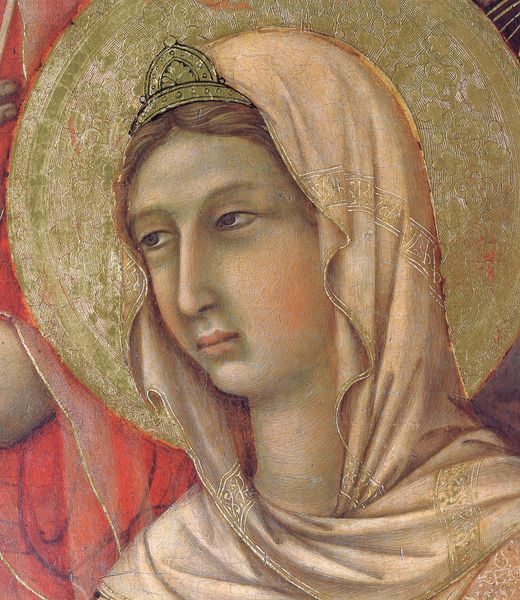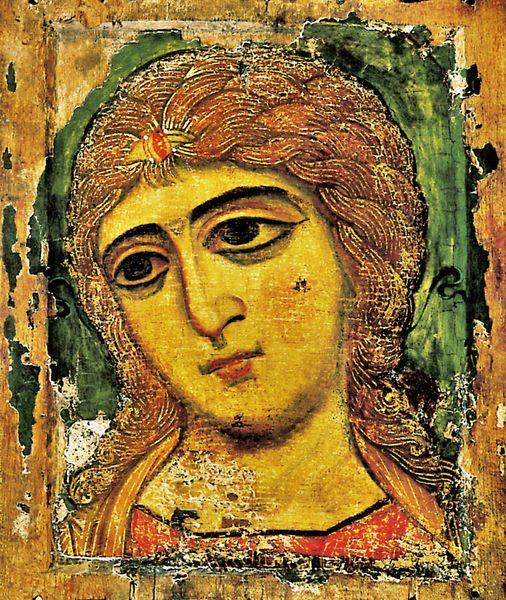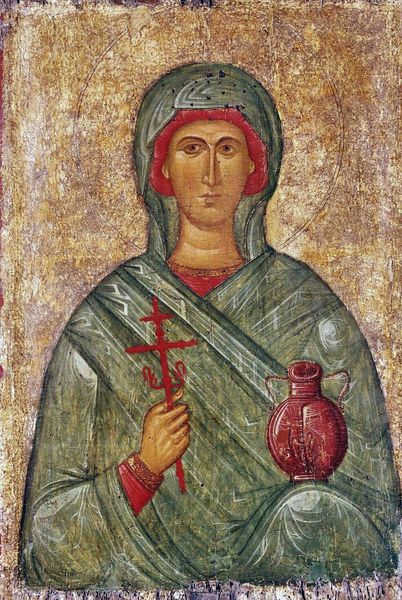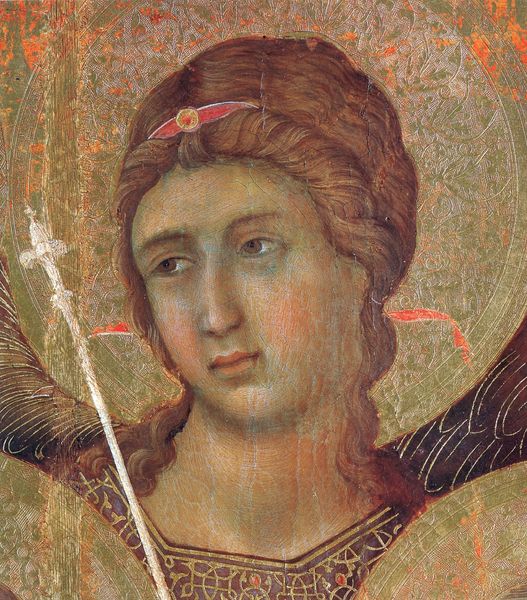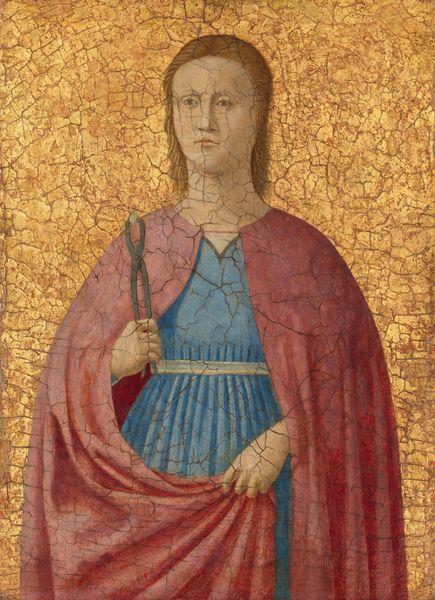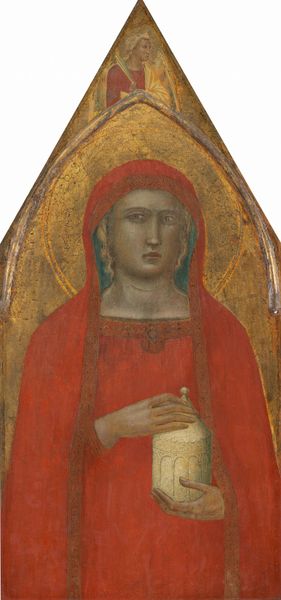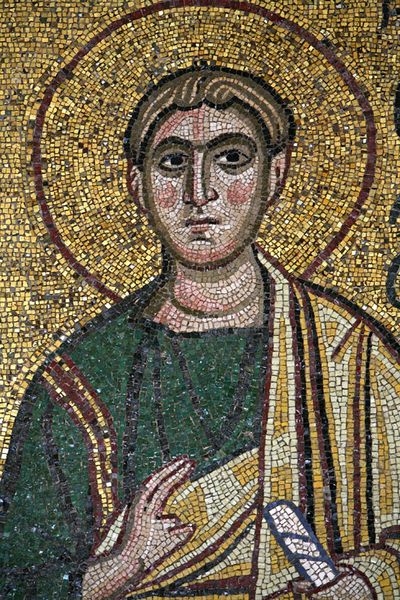
tempera, painting
#
portrait
#
byzantine-art
#
medieval
#
tempera
#
painting
#
oil painting
Copyright: Orthodox Icons,Fair Use
Curator: This tempera on wood panel, dating to approximately 1650, depicts the Virgin Mary. It's part of the Orthodox Icons collection at the Pushkin Museum in Moscow. Editor: The overall effect is…intense. Those unwavering eyes lock onto yours immediately. It’s very powerful despite the simplicity of the color palette—mostly reds and golds. Curator: Indeed. This image reflects the Byzantine style prevalent in medieval art, emphasizing spiritual symbolism over naturalism. The formal rigidity and the use of gold ground are characteristic of icons intended for veneration and communal contemplation. We see similar trends across Europe, from Italian altarpieces to illuminated manuscripts. Editor: And, if we think about how images of the Virgin were often circulated in various sociopolitical contexts – from fostering solidarity, female empowerment, the mother figure but also a model of oppression and a figure used to maintain the political status quo, this work can serve as a point of departure to deconstruct complex, interwoven systems. What kind of visual codes are employed to signal this subject? How do social class, ethnicity, gender intersect and inform her status? Curator: Precisely! Consider the cultural significance of icons in 17th-century Russia. The icon served as a conduit between the earthly and divine realms. Their production, distribution, and interpretation played a central role in the religious and social life of the period. They provided comfort, reinforced shared beliefs, and even participated in broader political narratives, like religious reformations and reaffirmation of orthodox beliefs that led to political action and conflict. Editor: Looking at it now, the darks under the neck could speak to her burdens of motherhood, a common trope, even though it isn’t just an act of private labor but also of the broader system of forced reproduction under capitalism. There is something about it that defies typical depictions of women and their role in society: The gaze goes against the passivity so commonly deployed to capture female figures, signaling defiance or awareness beyond suffering. Curator: Absolutely, that unflinching gaze. We are compelled to reflect on not only the art, but also its function, its patrons, and ultimately, the cultural and religious landscapes in which it existed. It continues to offer so much rich ground for exploring the complexities of Russian history and the ever evolving world of visual representation and religious life. Editor: I concur. The icon prompts us to continuously reconsider power structures. Its emotional depth pushes the limits of religious artworks.
Comments
No comments
Be the first to comment and join the conversation on the ultimate creative platform.
